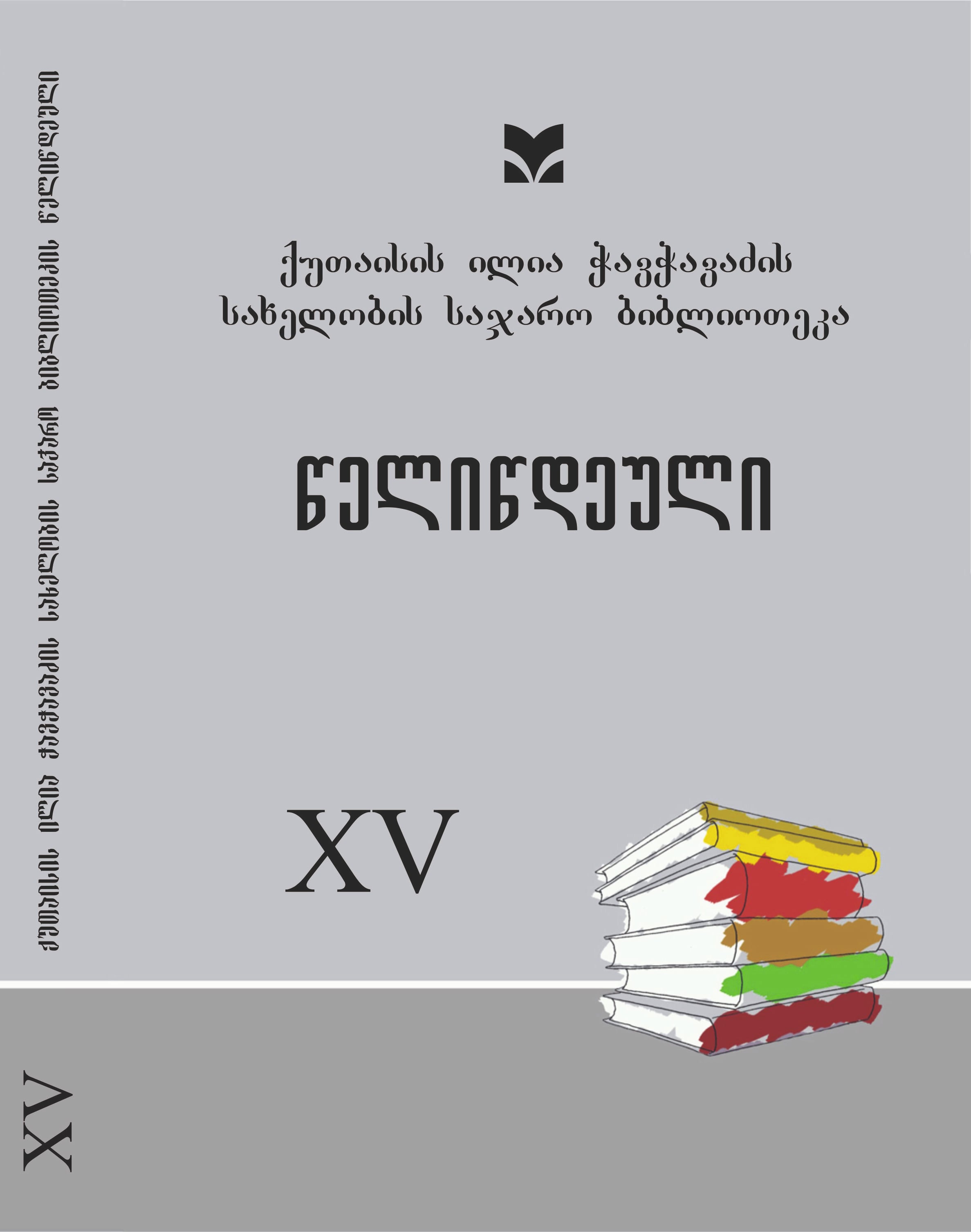Elguja Tavberidze’s biographical novel „Snow in the Month of the Harvest“ Linguistic-Creative
DOI:
https://doi.org/10.61491/yk.15.2023.8044Keywords:
„Snow in the Month of Harvest“, a novel by Elguja Tavberidze, the writer’s linguistic world, vocabulary-phraseologyAbstract
The value of an artistic text is determined by its ability to effectively convey the verbalized idea to the reader. The foundation of this effectiveness lies in language.
Elguja Tavberidze›s biographical novels are intriguing not only from an ideological-artistic standpoint and the author›s vision but also due to their linguistic-stylistic features that define the author›s unique style.
The novel «Snow in the Month of the Harvest» chronicles the contributions made by Tada Ashordia to the creation of the Megrelian alphabet. It presents compelling documentary material such as publicist letters and pamphlets from figures like Ilia, Akaki, Jacob Gogebashvili, Tedo Jordania, and others. The author›s aim is to illustrate the evolution of public opinion and the opposition stirred by Tada Ashordia and his associates.
It is crucial to examine the linguistic resources employed by the writer to depict a challenging historical era, to portray prominent figures in a manner that brings out their artistic depth, to integrate documentary material seamlessly into a novel, and to captivate the reader.
Research has shown that Elguja Tavberidze›s linguistic style is characterized by:
- Varied significant forms of oral communication, utilizing language that is as natural and spoken as possible, yet enriched with a redistribution of conceptual emphasis.
- Construction of utterances that ensure the appropriate perception of
- Linguistic features incorporating diverse irony: original similes created through adverbial nouns, metaphorically nuanced phrases, and uniquely structured sentence Understanding these features is essential not only for recognition but also for determining their stylistic function.




